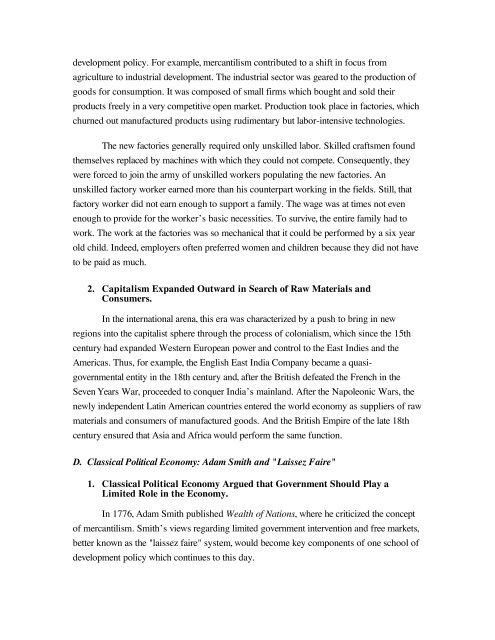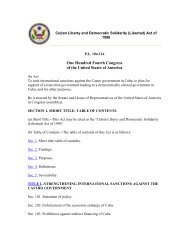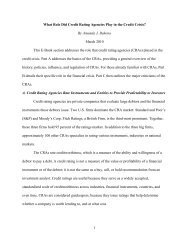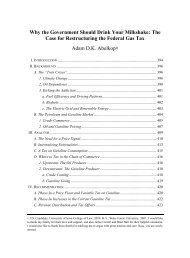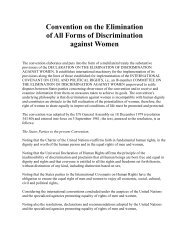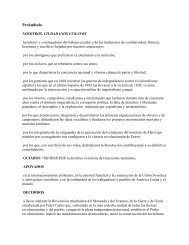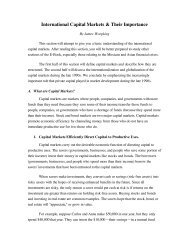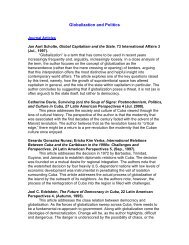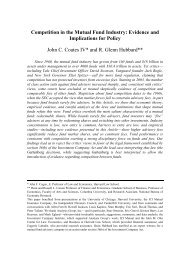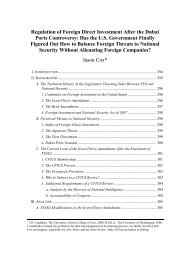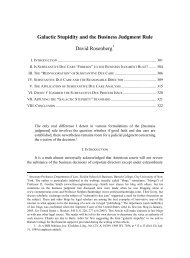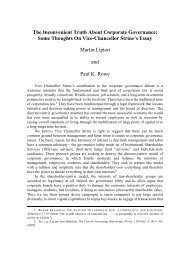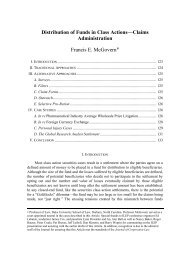How the Concept of Development Got Started
How the Concept of Development Got Started
How the Concept of Development Got Started
Create successful ePaper yourself
Turn your PDF publications into a flip-book with our unique Google optimized e-Paper software.
development policy. For example, mercantilism contributed to a shift in focus from<br />
agriculture to industrial development. The industrial sector was geared to <strong>the</strong> production <strong>of</strong><br />
goods for consumption. It was composed <strong>of</strong> small firms which bought and sold <strong>the</strong>ir<br />
products freely in a very competitive open market. Production took place in factories, which<br />
churned out manufactured products using rudimentary but labor-intensive technologies.<br />
The new factories generally required only unskilled labor. Skilled craftsmen found<br />
<strong>the</strong>mselves replaced by machines with which <strong>the</strong>y could not compete. Consequently, <strong>the</strong>y<br />
were forced to join <strong>the</strong> army <strong>of</strong> unskilled workers populating <strong>the</strong> new factories. An<br />
unskilled factory worker earned more than his counterpart working in <strong>the</strong> fields. Still, that<br />
factory worker did not earn enough to support a family. The wage was at times not even<br />
enough to provide for <strong>the</strong> worker’s basic necessities. To survive, <strong>the</strong> entire family had to<br />
work. The work at <strong>the</strong> factories was so mechanical that it could be performed by a six year<br />
old child. Indeed, employers <strong>of</strong>ten preferred women and children because <strong>the</strong>y did not have<br />
to be paid as much.<br />
2. Capitalism Expanded Outward in Search <strong>of</strong> Raw Materials and<br />
Consumers.<br />
In <strong>the</strong> international arena, this era was characterized by a push to bring in new<br />
regions into <strong>the</strong> capitalist sphere through <strong>the</strong> process <strong>of</strong> colonialism, which since <strong>the</strong> 15th<br />
century had expanded Western European power and control to <strong>the</strong> East Indies and <strong>the</strong><br />
Americas. Thus, for example, <strong>the</strong> English East India Company became a quasi-<br />
governmental entity in <strong>the</strong> 18th century and, after <strong>the</strong> British defeated <strong>the</strong> French in <strong>the</strong><br />
Seven Years War, proceeded to conquer India’s mainland. After <strong>the</strong> Napoleonic Wars, <strong>the</strong><br />
newly independent Latin American countries entered <strong>the</strong> world economy as suppliers <strong>of</strong> raw<br />
materials and consumers <strong>of</strong> manufactured goods. And <strong>the</strong> British Empire <strong>of</strong> <strong>the</strong> late 18th<br />
century ensured that Asia and Africa would perform <strong>the</strong> same function.<br />
D. Classical Political Economy: Adam Smith and "Laissez Faire"<br />
1. Classical Political Economy Argued that Government Should Play a<br />
Limited Role in <strong>the</strong> Economy.<br />
In 1776, Adam Smith published Wealth <strong>of</strong> Nations, where he criticized <strong>the</strong> concept<br />
<strong>of</strong> mercantilism. Smith’s views regarding limited government intervention and free markets,<br />
better known as <strong>the</strong> "laissez faire" system, would become key components <strong>of</strong> one school <strong>of</strong><br />
development policy which continues to this day.


